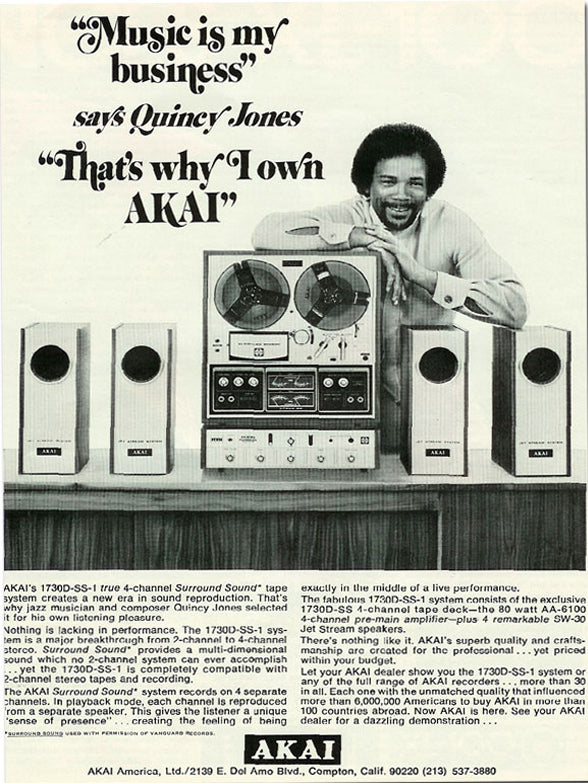
Quadraphonic sound
by Paul McGowan
The years 1973 through 1975 saw great changes: our first major recession since World War II and hifi manufacturers declaring two-channel audio wasn't enough—we needed to double our sound systems.
Following the stereo sales halcyon days of the Vietnam War, where container ship loads of receivers and speakers flooded every corner of the Western world, sales dropped in lockstep with the coming economic recession. Japanese and American hifi manufacturers scrambled to prop up revenues and the easiest way to do that was to double the number of speakers and replace the soon-to-be-outdated electronics to drive them. Thus was born the idea of Quadraphonic sound.
Four channel sound wasn't new. Engineers had been playing with 4-track tape recorders since the 1950s and well into the 1960s. But, when musician-turned-engineer Peter Scheiber invented, then sold, the idea of Matrix recording to CBS in the late 1960s, the floodgates began to open. In Matrix quadraphonic systems four channels of audio are mathematically compressed into two channels and the resulting composite recording can be pressed into vinyl or captured on magnetic recording tape. Scheiber's Matrix Recording system was also the basis of a fledgling company run by engineer Ray Dolby. Scheiber would eventually be forced to sue Dolby Labs for violating his patents.
Later versions of this technology eschewed Scheiber's Matrix compression in favor of a more discrete method known as CD-4 or Quadradisc, which was devised by JVC Corporation along with RCA Records and released in 1972. The steering information for the multiple channels was held in the ultrasonic regions above 20kHz and required a special cartridge with a Shibata stylus to capture the high frequency information.
The hoped conversion from a 2-channel world to a 4-channel version had begun but didn't last too long. By 1979 the fad had fizzled. Unlike the coming revolution of LPs to CDs, Quadrophonic sound was a bit too much too early. Consumers weren't yet ready to change everything: electronics, media, and speakers, just to hear sounds from in front and behind them.


- Choosing a selection results in a full page refresh.
- Opens in a new window.








